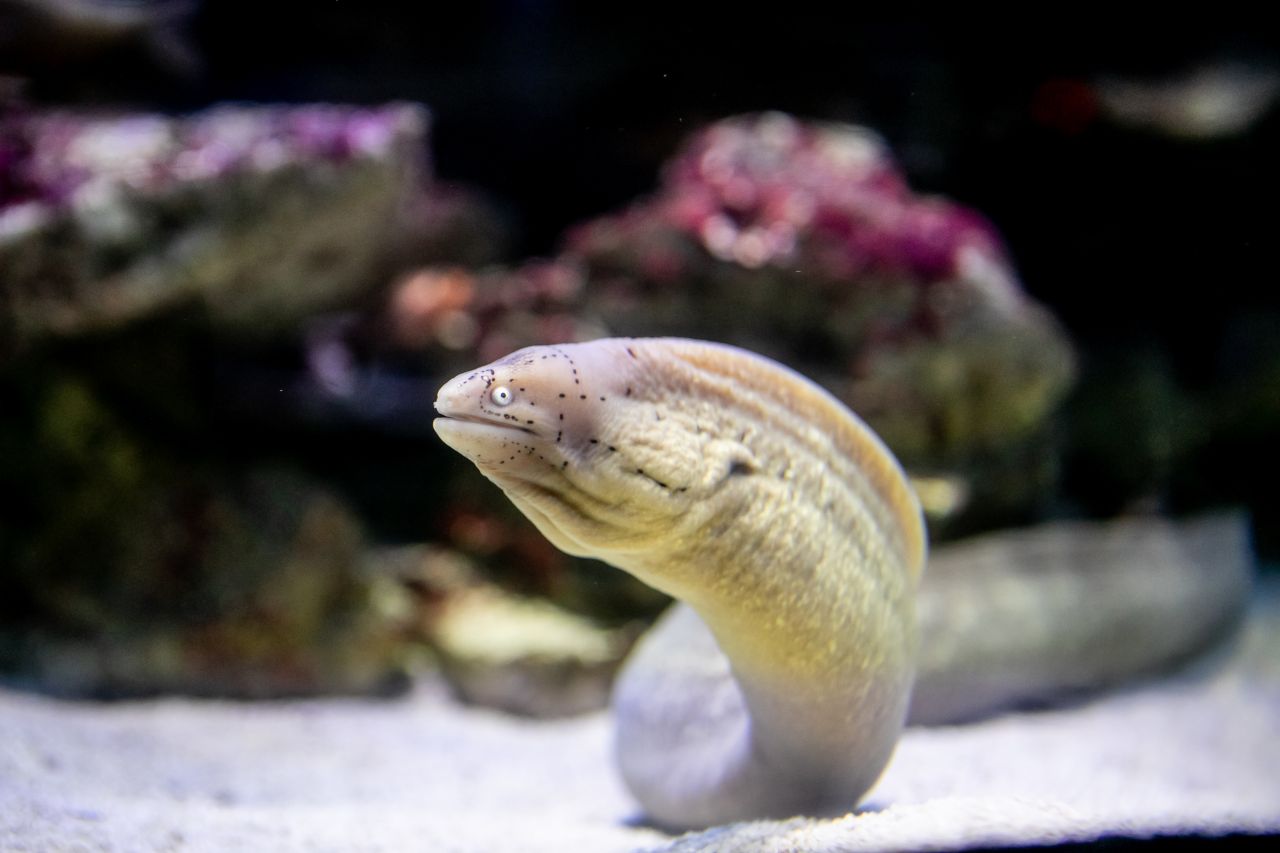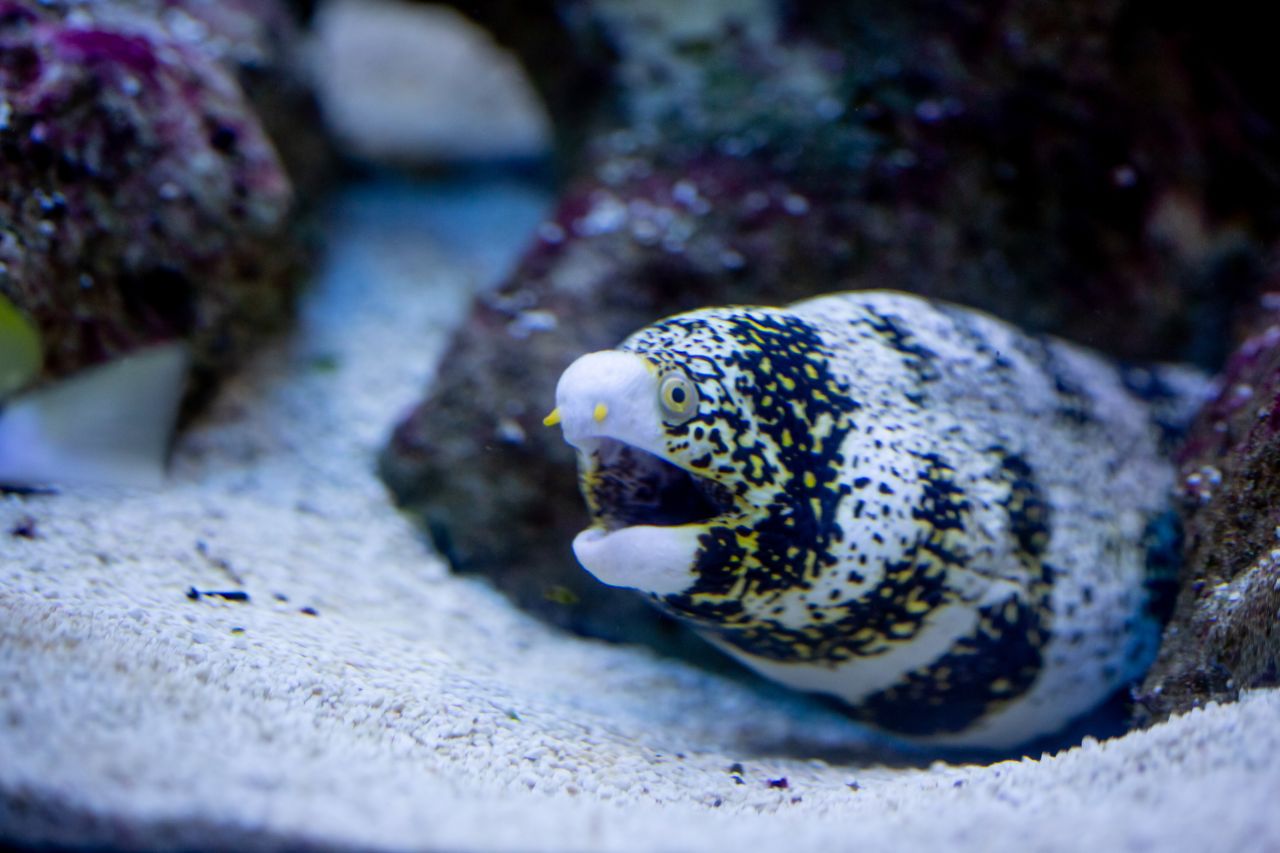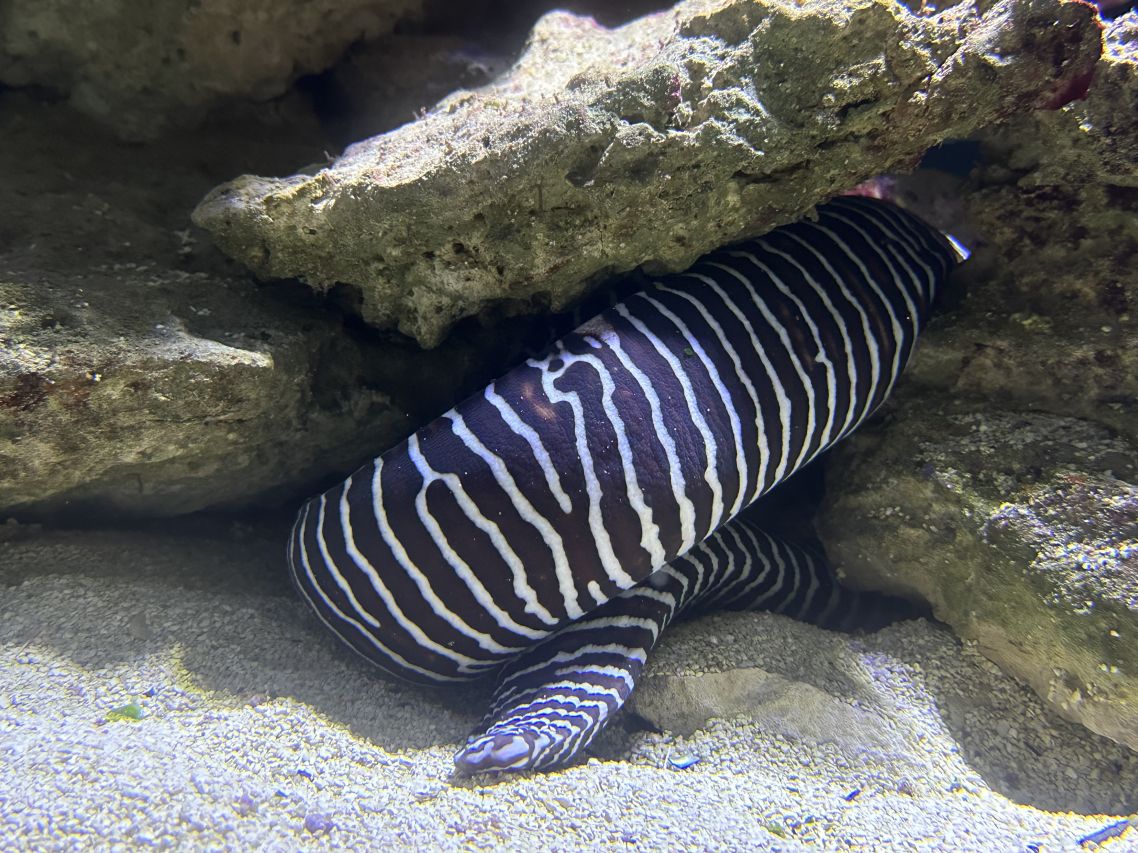Moray eels are shy, elusive, and snake-like in appearance. They are quite shy and live under ledges and in rock crevices. But there is much more to these animals than meets the eye. Believe it or not, there are roughly 200 different species of moray eel in the world’s marine environments! At the Aquarium, you can see four species of moray eel up close: the honeycomb, geometric, zebra, and tiger reef moray eels.
Here are eel-leven cool facts about moray eels:
1. Moray eels live in shallow water near shore areas, continental slopes, reefs, and deep seabed areas. They are found in both tropical and temperate waters in marine environments.
2. Moray eels are opportunistic feeders and eat fishes, octopuses, and crustaceans.
3. Though consumed in some areas of the world, their flesh can be toxic and could cause illness or death. Ancient Romans used to farm moray eels in seaside ponds as they were considered a delicacy.

4. Moray eels are considered a keystone species – as apex predators in their ecosystems, they keep prey species populations under control. Coral grouper fish are known to "recruit" giant moray eels to help them hunt. With their slender bodies, the moray eels can flush prey from holes and crevices that the grouper cannot access.
5. Moray eels have no specific mating season but mate when there is enough food and a stable habitat.
6. Most fish with rounded heads create negative pressure to assist in swallowing prey. With their slender heads, moray eels cannot create this negative pressure. Instead, they have a second set of jaws called the pharyngeal jaws. These jaws are found in the throat and equipped with sharp teeth. While feeding, moray eels propel these jaws forward into the mouth to grab, control and pull the struggling prey back into the throat and digestive tract.

7. Moray eels are oviparous – they lay eggs that hatch outside the womb.
8. Bites from these beautiful animals can quickly become infected due to the bacteria in their teeth, but thankfully moray eels are generally not aggressive towards humans.
9. Moray eels do not have bony gill covers but rather two round openings behind their heads. They use their mouths to pump water through these openings. That’s why their mouths are usually open when you see them at the Aquarium!
10. Moray eels secrete a protective mucus to protect their scaleless skin. In sand-dwelling morays, the mucus allows grains of sand to stick to the sides of their burrows.
11. Moray eels are long-lived and range in colour, pattern, and size, measuring between 15cm and 4m. The smallest eel species is the dwarf moray eel, while the largest is the giant moray eel.





